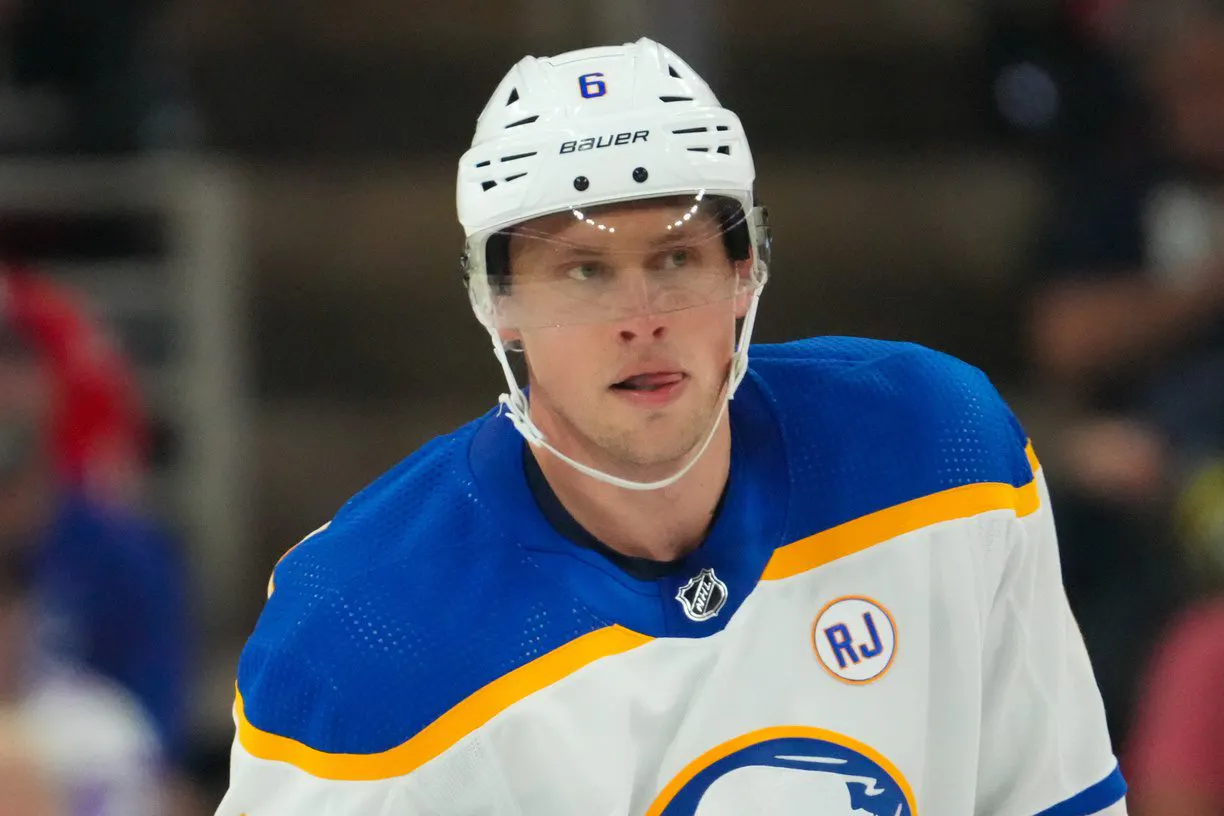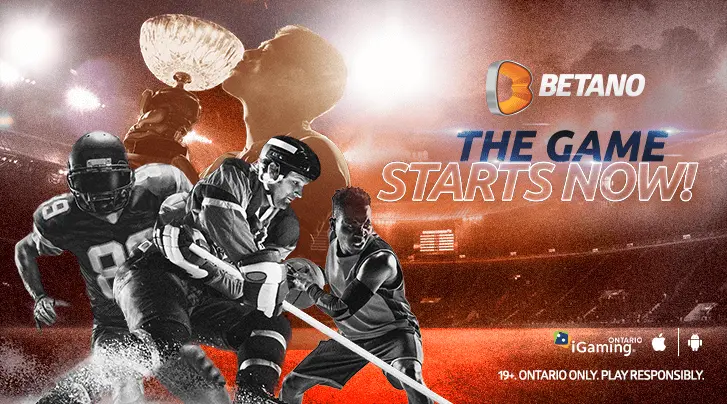The kids are all right in Buffalo, but not the veterans

One thing Buffalo Sabres GM Kevyn Adams highlighted about his approach to last season’s trade deadline was that he didn’t want to block his young players from getting valuable experience in a playoff race by adding veterans that would replace them in his lineup.
It’s a mindset that more teams should probably have, especially when they’re a young team on the up-and-up. Sure, experience is a valuable commodity as you’re trying to build a team. But it loses that value when those experienced players end up providing the team with a negative value on the ice or preventing the young players you’re trying to develop from getting that valuable experience firsthand as opposed to from the press box or in lesser roles.
It was an issue that plagued the earlier Auston Matthews-era Toronto Maple Leafs under Mike Babcock, when the coach would often lean too much on veterans like Ron Hainsey, Patrick Marleau, Leo Komarov and Roman Polak in roles they weren’t suited for at that stage of their careers. It’s even happening with the Detroit Red Wings right now, where players like Andrew Copp, J.T. Compher and Ben Chiarot are blocking some of their young talent for several seasons.
And now it may just be happening to the Sabres. Despite his words at the trade deadline, Adams went against his own policy of adding veterans that blocked the young players and signed Erik Johnsson, Connor Clifton and Eric Comrie and re-signed Kyle Okposo and Zemgus Girgensons. Not only were those their only moves of significance for their roster, they make up five of the six players on their roster who are 28 or older, with the other being Jeff Skinner. Even though the Sabres are the youngest team in the league at an even average age of 25, which is 0.68 younger than the next closest team, they still have enough veterans that are causing problems for this team.
Let’s start with the blueline additions. One of the Sabres’ biggest issues last season was their depth on defense beyond when Rasmus Dahlin and Owen Power were on the ice, so Johnson and Clifton were signings who, on paper, provided that. On top of that, Johnson came with plenty of experience having played 920 games in the regular season and another 55 in the playoffs, including all 20 games in 2022 when the Colorado Avalanche won their Stanley Cup, while Clifton came with a more modest 232 regular season games but 46 playoff games with the Bruins, including 18 in their trip to the Stanley Cup Final in 2019. In theory, it was the best of both worlds for the Sabres, getting defensemen who could provide some depth and experience on their blueline.
Unfortunately, that hasn’t quite panned out so far. I can’t speak on behalf of any words of wisdom they’ve provided this Sabres team in the dressing room, but their experience hasn’t exactly catapulted Buffalo towards a playoff spot, and their play on the ice has certainly hurt more than helped. Despite playing bottom-pair minutes, the Clifton-Johnson pairing has not only been the worst defense pairing on the Sabres to play at least 30 minutes, it’s the worst defense pairing in the league to play at least 100 minutes with a brutal 35.57% 5v5 expected goal share when they’re on the ice together. When they aren’t on the ice, the Sabres are working at much better rate of 50.38%.
But there is hope for the Sabres there, as the problem lies in just one of the defensemen. In the 145:24 of ice time that Clifton has spent away from Johnson, his 5v5 xG share improves significantly to 49.78%, while Johnson’s is still a disastrous 41.94% away from Clifton. As a whole, Johnson’s 39.2% 5v5 xG share is nearly 3% worse than any other regular player on the team and the sixth-worst share in the league among defenders with 200 minutes of 5v5 ice time, and the team improves to 49.91% without him on the ice.
That on its own is a concern, but the other issue is that, because of his experience, Johnson falls victim to the usual issue where coaches lean on them too much and feel like they can’t be taken out of the lineup. Johnson is the only defenseman outside of the big two in Dahlin and Power to play all 22 games, so not only is he tanking the Sabres’ play when he’s on the ice, he’s doing it every game. He mercifully has the least ice time of their six regulars, but that’s still 10:46 of ice time per game at 5v5 that is completely useless to them.
Add in the fact that he also blocks 2019 first-round pick Ryan Johnson from playing more than the 11 games he already has, as he has a 54.31% 5v5 xG share that leads the team, and it’s a double whammy of playing someone who’s significantly losing the battle in their minutes instead of someone who can win theirs.
Now on to the captain Okposo. It made sense to bring back because, well, he’s the captain of the team. He wanted to come back, the team obviously wanted him back, and his one-year, $2.5 million contract is much more reasonable than his previous seven-year deal with a $6 million hit.
I once again don’t know what Okposo’s leadership qualities bring to the team and the positives that stem from that, but there is a downside to it: it’s basically made him unscratchable, no matter how badly he plays. And unfortunately for the Sabres, it’s been pretty bad.
Through 22 games, Okposo has seen an on-ice xG share of 46.68%, which is only the sixth-worst among the Sabres regular forwards, but when you consider that three of the five players worse than him are players who regularly play with him in Zemgus Girgensons, Peyton Krebs and Tyson Jost, that probably says something about Okposo.
The two worst forward lines to play at least 30 minutes at 5v5 together for the Sabres contain both Okposo and Girgensons, one of their other players 28 or older, and like Erik Johnson, it’s coming in easy minutes on the bottom unit. It’s led to Girgensons having the third worst GAR on the Sabres with -2.6 and Okposo having the sixth worst with -0.3, and also like Johnson, they’ve played every game that they haven’t been hurt in, and that means that when they need to make room in the lineup, it usually comes more at the expense of a Zach Benson than an Okposo or Girgensons. It’s not that they’re unplayable, but they should probably be given the odd game off, which they won’t be outside of health reasons.
In defense of Okposo and Girgensons, though, their numbers do improve without either Krebs or Jost playing with them while Krebs and Jost’s stay the same, so it’s not like the two vets are the sole drivers of the bottom lines’ struggles. But, they haven’t exactly been shining stars either.
Speaking of veteran forwards, Jeff Skinner is another one that hasn’t been doing too hot. Okay yes, he has 10 goals and 18 points in 22 games, so he’s been productive, but there’s more to hockey than just putting up points, and that’s where the issues stem for Skinner.
One of the forwards worse than Okposo in terms of on-ice xG share at 5v5 was Skinner at 46.64%, and a lot of that is due to his defensive play, or lack thereof. His 3.31 XGA per 60 minutes is by far the worst on the team by a margin of 0.28. Whether he’s playing with Tage Thompson, Alex Tuch, Casey Mittlestadt or JJ Peterka, all of them see significant improvement in their ability to drive play when Skinner isn’t playing with them, with the former three seeing a 7-10% increase in their xG shares with Skinner off the ice.
Sure, Skinner’s producing to somewhat make up for it, but the Sabres’ top players could be benefitting even more if they weren’t hemmed in their own zone more while playing with Skinner. But, it also makes some sense to keep playing him high in the lineup to justify his pricey contract, even if that is a sunk-cost fallacy.
If there’s one veteran that hasn’t necessarily hindered the team, it’s Comrie. His play has been relatively mediocre with an .877% save percentage and 0.11 5v5 goals saved above expected, but his role has been acting as an insurance policy for the Sabres with both Devon Levi and Ukko-Pekka Luukkonen still unproven in this league.
Levi has played worse than Comrie so far with an .876% save% and -2.59 goals saved above expected, so with Levi now demoted to the AHL to develop his game, Comrie provides the Sabres with an experienced backup. And yet, he hasn’t gotten in the way of Luukkonen, who’s off to a strong start to the season with a .918 save% and 1.12 5v5 GSAx, as Comrie has played just five games this season.
The veterans are far from the only problem on this team. Thompson has certainly underperformed this season, Dahlin has struggled defensively, and Krebs has been unable to drive play no matter who he’s playing with. But all those players have upside. Outside of Skinner’s offense, there isn’t really much upside the aforementioned veterans can provide the team on the ice that make up for their poor play, and when you’re a young team trying to establish yourself as a consistent playoff team, you want as much upside as you can.
Kevyn Adams did exactly what he said he didn’t want to do in the offseason by adding some veterans, and it’s created the exact problem that he said it would. Perhaps they can find a way to work around it and find situations to make them work, or maybe even start to cut bait, but there’s only so much time before they run out of runway for a playoff spot and extend their NHL-record drought.
_____

Discover Betano.ca – a premium Sports Betting and Online Casino experience. Offering numerous unique and dynamic betting options along with diverse digital and live casino games, Betano is where The Game Starts Now. 19+. Please play responsibly.
Recently by Scott Maxwell
- Explaining the shootout “double tap” between the Florida Panthers and the Toronto Maple Leafs
- NHL power rankings: Is Los Angeles the King of the NHL?
- Amidst struggling Toronto Maple Leafs D-corps, Morgan Rielly playing his best defense yet
- New York Rangers’ Jacob Trouba fined $5,000 for high-sticking
- Vegas Golden Knights’ Shea Theodore to miss Saturday’s game with upper-body injury
More from Scott Maxwell
- Report: More ‘color vs. color’ jersey games wanted by NHL board of governors
- Hurricanes activate Jaccob Slavin from IR, returns against Flyers
- Jets activate Connor Hellebuyck from injured reserve, gets start against Capitals
- Devils’ Simon Nemec to miss time with injury
- Vancouver Canucks trade Quinn Hughes to Minnesota Wild